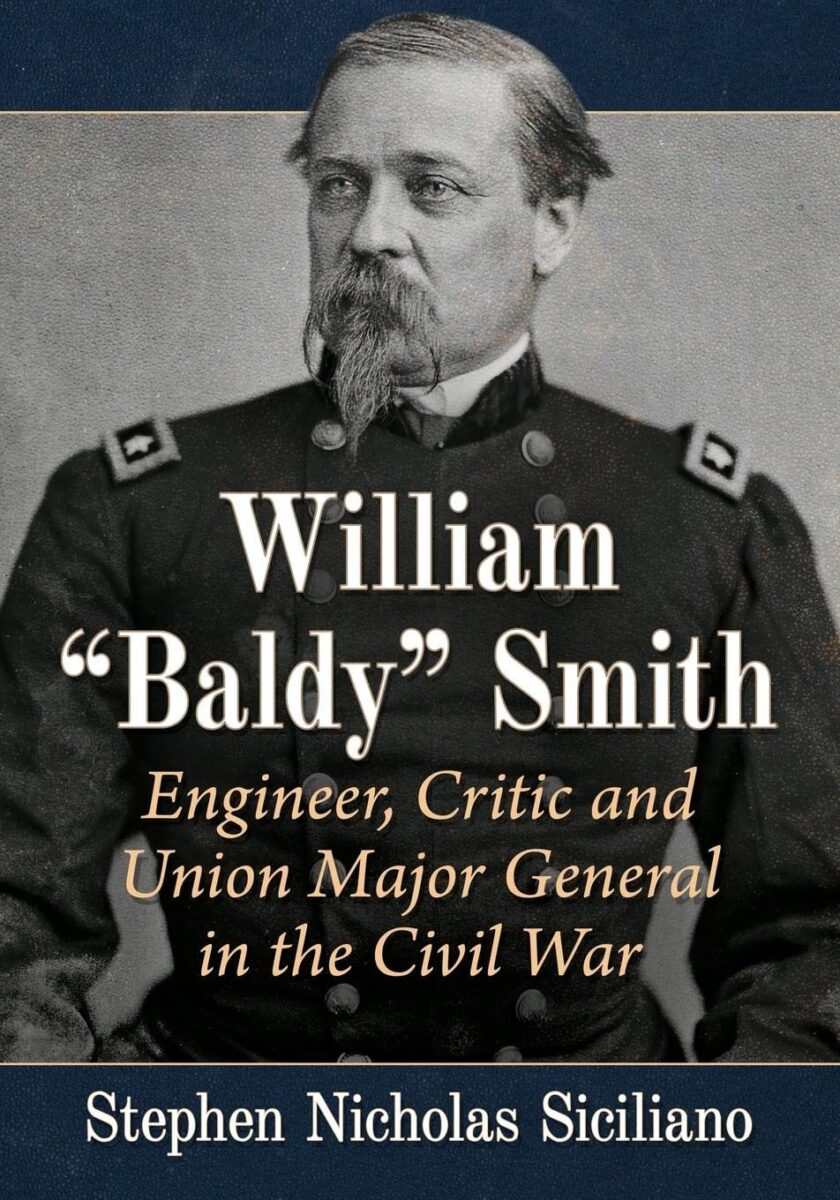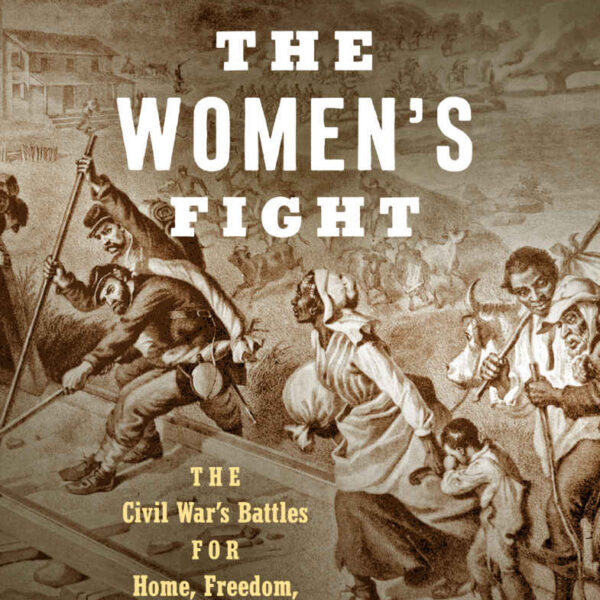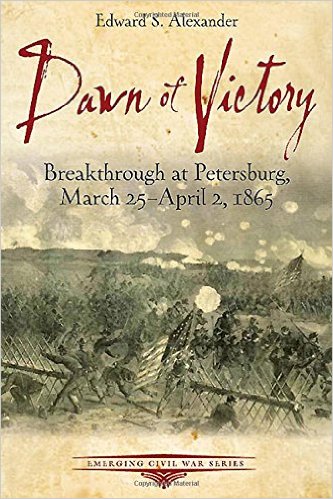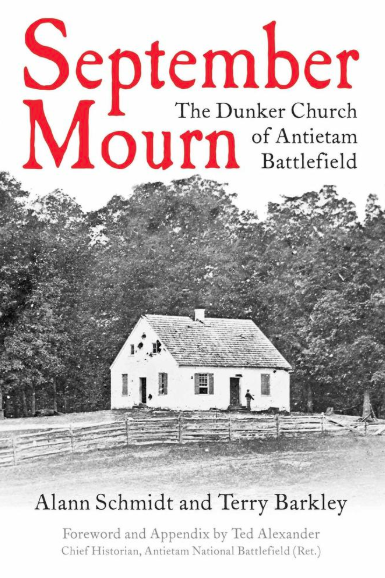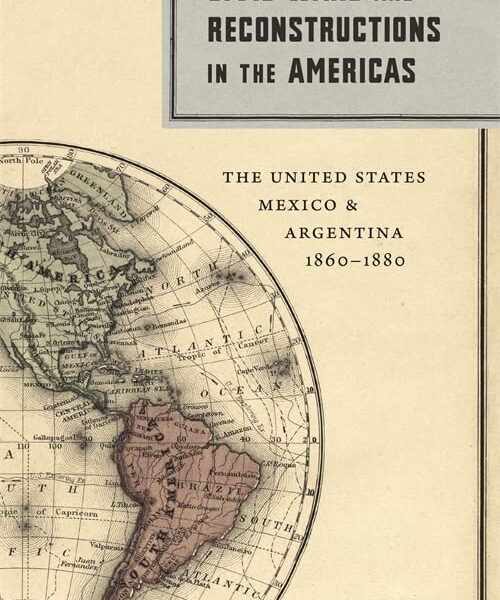Known as “Baldy” to friends and foes alike, General William F. Smith exasperated colleagues and earned the ire of U.S. Secretary of State Edwin M. Stanton—even as he elicited praise from other peers. That stark dichotomy stemmed largely from Smith’s penchant for critiquing (or second-guessing) tactical decisions that others made on the battlefield, contrasted with his own “careful planning and preparation,” and “insistence on comprehensive drilling and fair but firm discipline.” So notes author Stephen Nicholaus Siciliano in this new, readable biography of Baldy Smith.
Smith’s star-crossed career saw him serve with the Army of the Potomac in the war’s early years, the federal Department of the Susquehanna during the Gettysburg Campaign, and then in the Western Theater. He was one of the few general officers to be able to make that claim, but too frequently, his nitpicking and criticism delayed desired promotions and hampered what could have been a successful career—and a larger place in Civil War history.
The Vermont native received an appointment to the U.S. Military Academy in 1841 and graduated four years later, ranking an impressive fourth in his class of 41 cadets. Assigned as an engineer, Smith supervised work on lighthouses and coastal improvements and taught mathematics at West Point as an assistant professor in two separate stints. He survived a serious bout of malaria in 1855, though it impacted his health for the rest of his life.
Smith became the colonel of the newly raised 3rd Vermont Infantry in July 1861, but he was promoted to brigadier general within a month. Over the next eighteen months, he successively led a brigade, a division, and then the Sixth Corps of the Army of the Potomac. He lost that position in the recriminations and political maneuvering following the disastrous defeat at Fredericksburg in December 1862. His complaints to President Lincoln about the shortcomings of his commanding general, Ambrose Burnside, coupled with Smith’s past relationship with former army commander, the Democrat George McClellan, led to his downfall and temporary shelving from field command.
During the Confederate Army of Northern Virginia’s incursion into Pennsylvania in the late spring of 1863, Smith, then out of a command position, offered his services to his former colleague in the Army of the Potomac, Maj. Gen. Darius Nash Couch, then commanding the newly organized Department of the Susquehanna. Couch assigned Baldy to oversee the New York and Pennsylvania militia divisions tasked with defending Harrisburg from a possible enemy attack. Plagued with inconsistent performance from aged or incompetent subordinates, Smith succeeded in halting the rebel advance in a series of minor skirmishes that culminated in a risky but determined rejection of J.E.B. Stuart’s entreaties to surrender Carlisle. That defiance led to Stuart shelling the town, endangering the populace but denying the Confederates easy access.
In the fall of 1863, Smith became the chief engineer of the Army of the Cumberland and helped to develop the vital supply route that became famous as “the Cracker Line.” Promoted to major general largely through Grant’s efforts, returned to the Army of the Potomac in 1864 and again led a division in the Army of the Potomac’s fighting in Northern Virginia before bickering with fellow generals led to his dismissal as commander of the Eighteenth Corps. He spent the rest of the war serving on various boards and committees, resigning from the U.S. Army in 1867. He was president of the International Telegraph Company and then served on the board of police commissioners in New York before moving to Pennsylvania as a civil engineer. He died in 1903 in Philadelphia and is buried in Arlington National Cemetery.
Stephen Siciliano’s full length, detailed biography of Baldy Smith is appropriately subtitled “Engineer, Critic and Union Major General in the Civil War.” That effectively sums up Siciliano’s characterization of the controversial officer. The author provides a sweeping general overview of Smith’s career in this interesting work, giving the reader a solid background on the general and his successes and failures. At times, Siciliano somewhat downplays or dismisses Smith’s weaknesses, choosing to focus more on his accomplishments than on Smith’s frequent criticisms of his peers and superiors. That aside, this McFarland book is the first published biography of Baldy in modern times (the last was in 1904) and is well worth reading, whether you agree or not with the author’s general contention that Smith’s “strategic perspective that helped save Federal armies.” One thing is certain: Smith’s worst enemy was not the Confederates. It was himself.
Scott L. Mingus Sr. is the co-author (with Eric J. Wittenberg) of the award-winning two-volume set, If We Are Striking for Pennsylvania: The Army of Northern Virginia and the Army of the Potomac March to Gettysburg.
